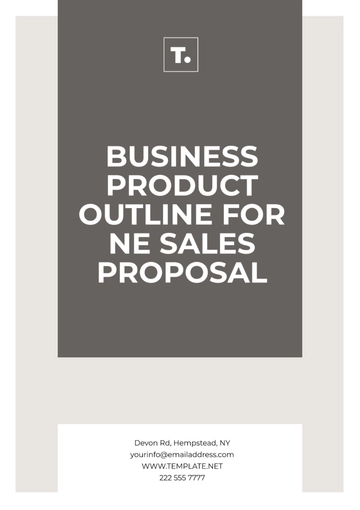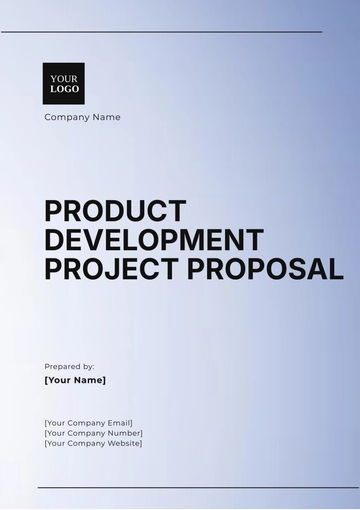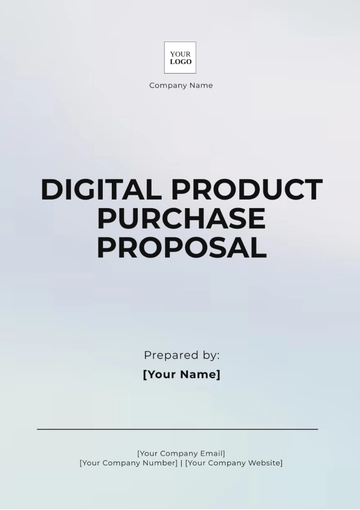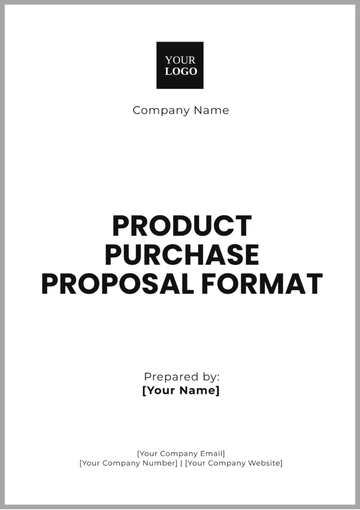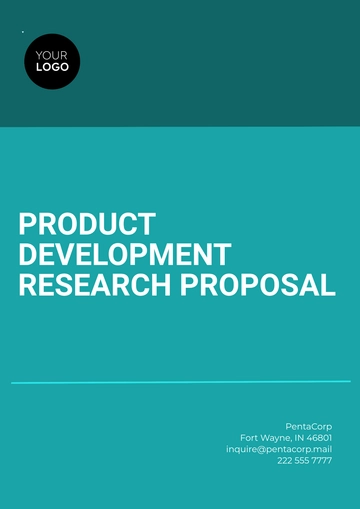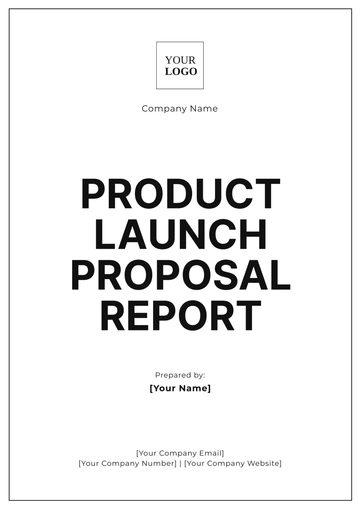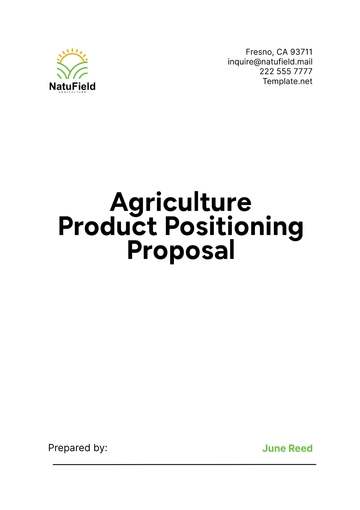Free Product Development Research Proposal

Prepared by: [Your Name]
I. Abstract
This research proposal outlines a comprehensive plan for product development, focusing on the methodology, process, and expected outcomes. It aims to identify market needs, conceptualize solutions, prototype development, and evaluate product feasibility. The ultimate goal is to ensure successful market entry and consumer adoption of the new product.
II. Introduction
Product development is a critical business function that involves the creation of new products or the improvement of existing ones. This proposal aims to provide a structured approach to understanding and implementing effective product development strategies that align with consumer needs and market trends.
III. Objectives
The primary objectives of this research are:
To identify and analyze market needs and consumer preferences.
To conceptualize and design innovative product solutions.
To develop and test prototypes.
To evaluate the feasibility and potential success of the product.
IV. Literature Review
A thorough review of existing literature reveals several key aspects of product development, including market analysis, design thinking, prototyping methods, and product evaluation techniques. Notable references include:
Cooper, R. G. (2050). Stage-gate systems: A new tool for managing new products. Business Horizons, 33(3), 44–54.
Brown, T. (2058). Design thinking. Harvard Business Review, 86(6), 84–92.
Ulrich, K. T., & Eppinger, S. D. (2055). Product Design and Development. McGraw-Hill Education.
V. Methodology
A. Market Analysis
The initial stages involve identifying market gaps and consumer needs through surveys, focus groups, and competitive analysis.
B. Conceptualization
Using design thinking principles, brainstorming sessions will be held to generate innovative ideas. Selected concepts will be evaluated based on feasibility, novelty, and market potential.
C. Prototype Development
Prototypes will be developed using agile methodologies to allow for iterative testing and improvement. Rapid prototyping tools and techniques will be employed.
D. Product Evaluation
Prototypes will be tested with target user groups to gather feedback. Evaluations will include usability testing, A/B testing, and market simulations
Phase | Activities | Timeframe | Resources |
|---|---|---|---|
Market Analysis | Surveys, Focus Groups, and Analysis | 1-2 months | Market researchers and analysts |
Conceptualization | Brainstorming Sessions, Feasibility Studies | 2-3 months | Designers, Engineers |
Prototype Development | Rapid prototyping and iterative testing | 3-4 months | R&D Team, Technicians |
Product Evaluation | User testing and market simulations | 2-3 months | Testers, Marketers |
VI. Expected Outcomes
The research is expected to result in a highly feasible, innovative product that meets market demands and consumer needs. Additionally, the process will offer valuable insights into the product development lifecycle.
VII. Conclusion
This research proposal outlines a structured plan for developing a new product, focusing on various stages such as market analysis, conceptualization, prototype development, and product evaluation. Through this systematic approach, the proposed product is anticipated to achieve successful market entry and consumer adoption.
VIII. References
Cooper, R. G. (1950). Stage-gate systems: A new tool for managing new products. Business Horizons, 33(3), 44–54.
Brown, T. (2058). Design thinking. Harvard Business Review, 86(6), 84–92.
Ulrich, K. T., & Eppinger, S. D. (2055). Product Design and Development. McGraw-Hill Education.
Blank, S. (2053). Why the lean start-up changes everything. Harvard Business Review, 91(5), 63–72.
Ries, E. (2051). The Lean Startup: How Today's Entrepreneurs Use Continuous Innovation to Create Radically Successful Businesses. Crown Publishing Group.
- 100% Customizable, free editor
- Access 1 Million+ Templates, photo’s & graphics
- Download or share as a template
- Click and replace photos, graphics, text, backgrounds
- Resize, crop, AI write & more
- Access advanced editor
Product Development Research Proposal Template offered by Template.net. This downloadable and printable template streamlines your research process, ensuring professional and polished proposals. Effortlessly tailor every detail using our editable AI Editor Tool, making it perfect for aligning with your unique project goals. Download now to create comprehensive research proposals with ease!
You may also like
- Business Proposal
- Research Proposal
- Proposal Request
- Project Proposal
- Grant Proposal
- Photography Proposal
- Job Proposal
- Budget Proposal
- Marketing Proposal
- Branding Proposal
- Advertising Proposal
- Sales Proposal
- Startup Proposal
- Event Proposal
- Creative Proposal
- Restaurant Proposal
- Blank Proposal
- One Page Proposal
- Proposal Report
- IT Proposal
- Non Profit Proposal
- Training Proposal
- Construction Proposal
- School Proposal
- Cleaning Proposal
- Contract Proposal
- HR Proposal
- Travel Agency Proposal
- Small Business Proposal
- Investment Proposal
- Bid Proposal
- Retail Business Proposal
- Sponsorship Proposal
- Academic Proposal
- Partnership Proposal
- Work Proposal
- Agency Proposal
- University Proposal
- Accounting Proposal
- Real Estate Proposal
- Hotel Proposal
- Product Proposal
- Advertising Agency Proposal
- Development Proposal
- Loan Proposal
- Website Proposal
- Nursing Home Proposal
- Financial Proposal
- Salon Proposal
- Freelancer Proposal
- Funding Proposal
- Work from Home Proposal
- Company Proposal
- Consulting Proposal
- Educational Proposal
- Construction Bid Proposal
- Interior Design Proposal
- New Product Proposal
- Sports Proposal
- Corporate Proposal
- Food Proposal
- Property Proposal
- Maintenance Proposal
- Purchase Proposal
- Rental Proposal
- Recruitment Proposal
- Social Media Proposal
- Travel Proposal
- Trip Proposal
- Software Proposal
- Conference Proposal
- Graphic Design Proposal
- Law Firm Proposal
- Medical Proposal
- Music Proposal
- Pricing Proposal
- SEO Proposal
- Strategy Proposal
- Technical Proposal
- Coaching Proposal
- Ecommerce Proposal
- Fundraising Proposal
- Landscaping Proposal
- Charity Proposal
- Contractor Proposal
- Exhibition Proposal
- Art Proposal
- Mobile Proposal
- Equipment Proposal
- Student Proposal
- Engineering Proposal
- Business Proposal

